Last Updated on January 22, 2023
There are generally two ways to explore the world of fantasy rpgs.
You can have a ‘theater of the mind’ game, which basically just means that the players and the DM use their imaginations to bring worlds to life.
Then we have maps and D&D miniatures, a playstyle that relies on the use of physical (or digital) props to allow players to explore the settings.
While these are the two extremes, most groups operate somewhere in the middle ground of this spectrum.
All of the miniatures and terrain structures can seem to exist behind a paywall, and most of us just use whatever we can to bring the worlds we wish to experience to life.
In this article, we’re going to give you some ways to start breaking past that playwall.
From the ground up we’re going to help you bring a world to life without having to empty your pockets.
So what does the ground up mean? Well since you clicked on this article you probably already know that it means maps. Maps are literally how we introduce our players to the world, and in a lot of cases, how we allow them to interact with it.
The three main types of maps that we’ll be discussing are:
- regional maps
- city/town maps
- battle-grids
Regional maps are the larger maps we’ll look at, they might show a few continents, a few towns, or they might show the world in its entirety.
Battle-grids are the maps you’ll often see covered in squares. These maps could be of dungeons, towns, or whatever, but they show a specific amount of space and give the players an idea of how large an area is.
Battle-grids are the maps miniatures (or m&ms) will go on whenever characters are making specific decisions about their movement, and yes, that includes battles as well.
Building Maps
Map building can be an intimidating process, so I want to give you a few tips before you even jump into the actual building process.
Whether you’re putting together a regional map, a battle-grid, or trying to map out a city, you don’t have to get every detail “right.” A common struggle for DM’s, especially if they’re just starting out, can be this overwhelming feeling that everything needs to be perfect.
When you’re building it’s important to remember that it’s not all on you as the DM to create the world. You just have to set the groundwork. If it’s not on the physical map in front of you it can show up through the story you and your players create, and you can add it in later.
Speaking of stories, never miss the opportunity to tell a story through the creation of your maps. Allow me to explain what that can mean for the different types of maps we build.
If I’m building a continent, I want to be able to show, or allude to, certain elements of the story that I have thought out. I might put an unlabeled town behind a mountain range, so the players know it’s there, but not say what it is.
In the first couple sessions, they might learn that it’s the home to a violent tribe of Orcs, or maybe it’s the ruins of an ancient dwarvish civilization.
I can also use a continent to explain the lore, perhaps the “Dragon’s Spine”, a mountain range that I put in a few of the continent map samples below, is where a great Dragon rests or was once slain.
In our fantasy map building, everything can have a story behind it. Then again, sometimes a tree is just a tree.
We want our adventurers to have an impact on our world. When we build a town it can be anything from a few houses and an inn, to a vast city with a bustling marketplace and various districts.
Much like quantum physics, a player’s observation of a world should have an impact on it.
If my player’s alchemist artificer wants to stop at a potions shop that’s not explicitly written into my town there is no need to panic. I’ve left more than a few unlabeled buildings so that Poppin’s Potent Potions can show up where it needs to.
As for storytelling with a town, how did New York City come to be?
It was once a small port set perfectly at the bottom of the Hudson to be an excellent trading post. It grew because it was in a strategic place, and the way it grew was influenced by the people that lived there.
When you place your cities, think of why they might be where they are. Are they also a bustling port, or are they at the crossroads of significant trade routes? Just a few minutes of thought here can make your world far more believable.
Battlemaps are perhaps the easiest, and the hardest to create. Dungeons exist for some reason, and that reason explains the layout. A defunct military outpost taken over by kobolds isn’t going to be well kept, but it’s not going to look like a cave.
When we make a dungeon we want to have a reason for building it, and then we just put down the skeleton of it. Everything else can be filled by the combined imagination of you and your players, and sure, a few fun props if you want.
The last thing I want to cover before we give you proficiency with Cartographer’s Tools is a very simple thing that can be easily forgotten.
Maps already exist!
If making a map intimidates you right now, don’t worry about it. Spend your time creating lore or doing the other things you want to do as you prep for your next session. Our world is full of places that you can just print out a simple map of and slap a grid on.
I mean, here’s a map of Alaska next to what I was able to turn it into in just 5 minutes.
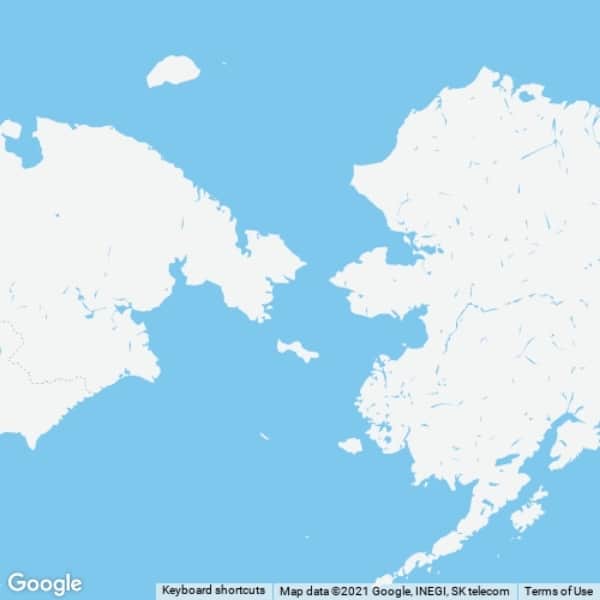
Whenever I want to pull this trick I use a site called snappymaps to get a clear view of the area I want without any labels, but you can use whatever method you want to do this.
There are also people who love to make fantasy maps that you can find online through patreon or their own personal websites, who make great pieces for a small fee.
Best DnD Map Makers & Methods
The below options are some of the best map-making methods we’ve found. Every option on this list is at least partially free. While some of these have paid features or subscriptions, we’re only putting them here if you can load up the website and make a map you’ll be happy with without emptying your pockets.
We’ll rate difficulty with three options: Novice, Competent, and Expert. These refer not necessarily to the level of skill you’ll have to show up with to effectively use these methods, but more to the learning curve you might experience when figuring out how to use the method.
Diversity refers to how many customization options these methods have. One star means most maps will come out looking the same, whereas a five star method is going to create unique snowflakes whenever you make new content.
Pen and Paper
- Price: Free, or Pay What You Want
- Difficulty: Novice
- Diversity: ★★★★★☆☆☆☆
Ah yes, the classic option. I want to quickly clear up the price range there. If you have pen and paper lying around at home this is free, but you can always spend more money on more art supplies. If you’re buying a large dry erase grid, or fancy construction paper this might cost a few more pennies.
There are a lot of ways to go about this, which is part of what makes this so diverse. You can sit and create something from scratch, find inspiration in the real world or from a book map you enjoy, or you can find some other cool way to make your map your own.
One of my favorite ways to make a new map is to roll a bunch of dice on whatever I’m using for a map and use their spread as an outline for my map. The individual dice can have meaning behind them, or each dice can represent a different landmark like a town or lake. It’s a great way for beginners to start cartographing.
There are hundreds of tips and pointers on how to effectively make your own map, so keep your eyes out for a guide on map-making in the near future.
Inkarnate
- Price: Free, or Pro subscription $5 monthly or $25 yearly
- Difficulty: Competent
- Diversity: ★★★☆☆
Inkarnate is one of the most popular map making tools out there, so of course it deserves a place on this list. It is an excellent map maker with a fairly intuitive set of tools, but takes a good amount of playing around time to really get the hang of it.
The free version is definitely a great way to build some really stunning larger maps. You get to shape your landmasses and then brush them with one of the land coloring options to create what sort of world you’re looking for.

Building cities and battle-maps in Inkarnate is a different process entirely, or rather it should be. They use the same free flowing tools as the regional and world builder options so for anyone that’s artistically challenged like me, it can become extremely difficult.
Walls and other stamps don’t include a snap to grid option and it’s a gruelling process trying to make something that looks like an organized dungeon and not a pile of wood and rocks.
The paid option opens up a few more features for editing, such as a path tool and the ability to extract regions from world maps, cities maps from regions, and expand from cities outward.
It also opens up 1000’s of more assets. Stamps, fonts, blending colors, and more open up to you for a fee, and if you enjoy the interface it’s more than worth it.
If you plan on not spending any money this is still a great place to build your world and flesh out your regions, but maybe move elsewhere for anything closer than that.
Donjon
- Price: Free
- Difficulty: Novice
- Diversity: ★★★★★
Donjon is a website with a huge collection of random fantasy generators. From whole campaigns to random treasures, with just about everything in between, this page has a great collection of map generators to choose from.
The 5e dungeon generator is impressive, let’s start with that. Like most generators across the internet this has a variety of values for you to decide before generation.
You can very easily be handed a completely random dungeon that’s well laid out, or you can choose the motif, setting, room size, dungeon size, and more to get the dungeon you’re looking for.
What’s more is that the site also provides you with everything you need to populate the dungeon! I mean I’m seriously blown away, this site actually gives you wandering monsters and which corridors they might be in, treasure, traps, etc. This site will even give you the history of the dungeon.
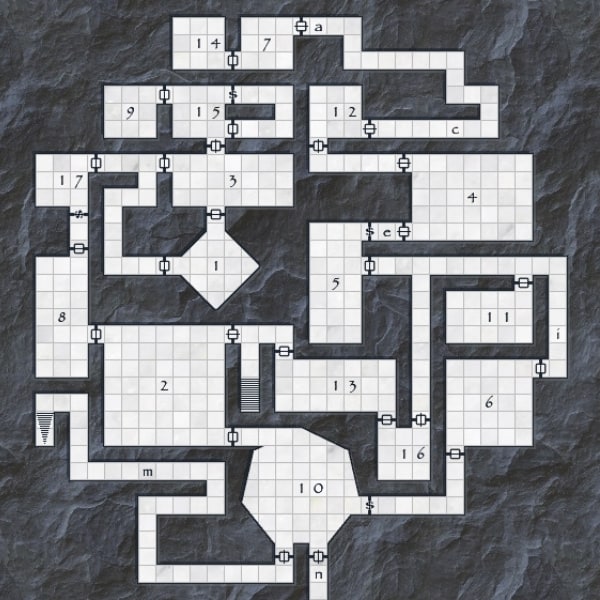
Whether you’re just looking for a simple battle-map, or you’re running behind and need a quick dungeon to fill a session, this site has what you need.
Of course they also have a world builder and a city builder which follow much the same concept. The world builder does take a bit of time to load up your new world, but it does not disappoint.
The city/town builder is a bit less stylistically pleasing than the other features of the site, but again, it has everything you need to stop stressing over the little things.
Dungeon Scrawl
- Price: Free
- Difficulty: Competent
- Diversity: ★★★★☆
As the name implies, this site is for making dungeons. There are a few tools which you use to make your rooms and paths, as well as adding in doors or stairs. On the surface it’s a very simple builder that takes a few minutes to get the handle of.
Once you start to play around a little more you’ll find a load of stamp assets to furnish your dungeon. There are a few different styles to choose from as you build to give your dungeon a different feel, or a different setting.
Unlike some other sites that utilize stamps, you can also import your own images, which really changes the game in my eyes.
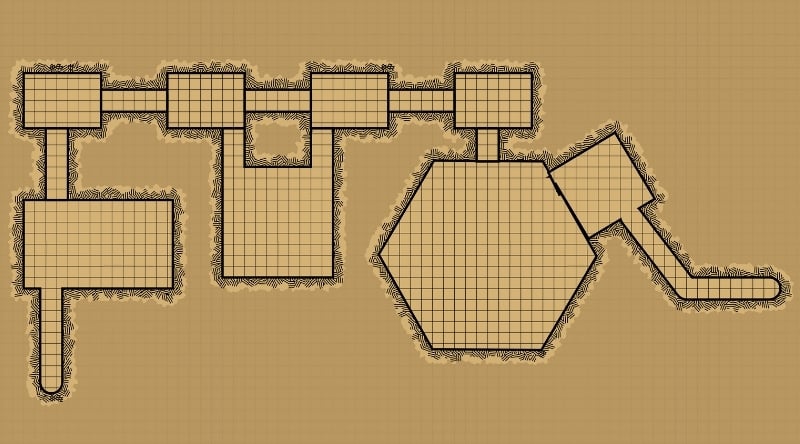
In fact, if you liked the Donjon generated map, and are just looking to do an edit, you can import that map right on in and then fix the things that you want to be there. As a team, these can work extremely well.
You can also bring in images to drop down in your background so your map’s floor can feel the way you want it to. One of the presets, for example, utilizes a wood grain floor to instantly make your map feel like it belongs somewhere other than a sheet of graph paper.
Azgaar’s Fantasy Map Generator
- Price: Free
- Difficulty: Expert
- Diversity: ★★★★☆
If you’re looking to build a world or region, Azgaar’s is a great generator. It uses procedural generation to give you the world you want, and it does a lot of things really well. One of the first things you’ll notice is the many different layers you can choose to view.
This generator gives you the ability to see, and edit, the political, cultural, religious, and topographical landscape of the world you’ve created, amongst other options.
The editing interface for these is relatively simple. So if you just want the world created, but you already know the social structure of your world, you can pretty easily change it to your likings.
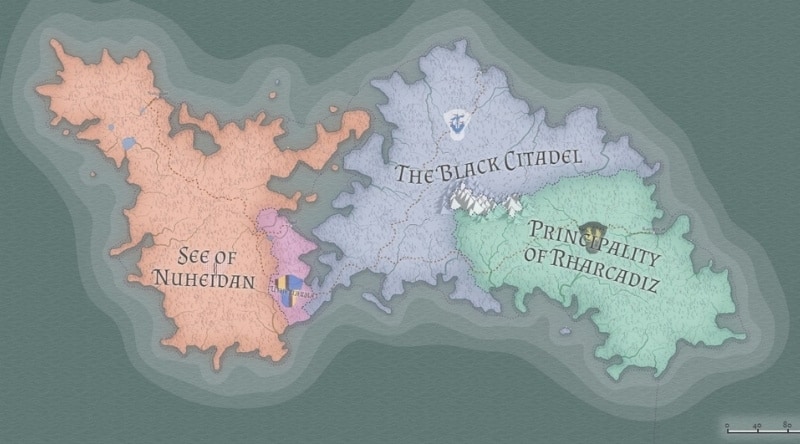
The reason I’ve given this an expert ranking is because of the process involved in creating your own world. The about option does link you to a tutorial which does a decent job of explaining things. But if you’re not familiar with procedural generation, or cartography terms, it can still be a bit dicey.
I had a great time playing around with the different options to make something I really enjoyed. This won’t be the option for everyone, but if you’re invested in creating an entire new world for your homebrew this should do the trick.
RPG Map Editor 2
- Price: Free
- Difficulty: Expert
- Diversity: ★★★★★
RPG Map Editor 2 is just so cool. As far as mapmakers go, this has got to be one of the most unique. The feel of the maps it gives you would fit perfectly in any top down videogame RPG, which is a huge plus for me. Get your pixely stardew valley vibes here.
While this does have a few fantastic presets to choose from for some inspiration, this is a sandbox. You are given all the tools to create your maps, and while the primary purpose of this would be battle-maps, you could conceivably make maps of any scale.
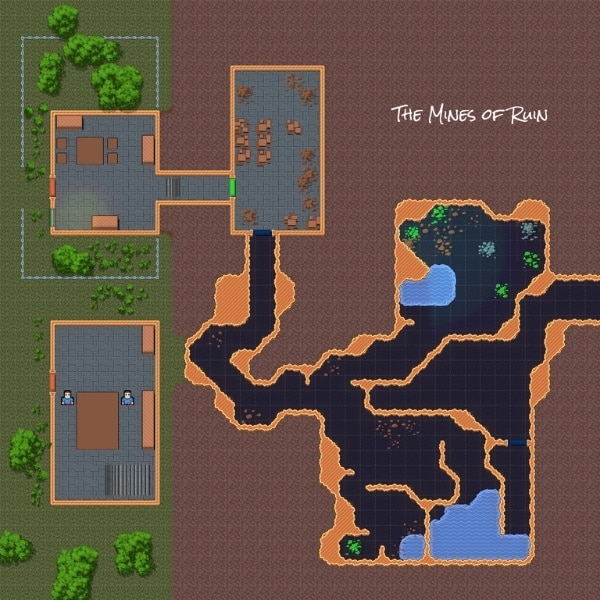
There are so many assets to choose from with full RGB scaling to make them your own, as well as the ability to upload your own.
The UI can be very tricky though. If you just want to throw a few rooms together in a cute fantasy style this would be for novices, but anything more complicated and the wall to climb is pretty steep.
Additionally, I’d suggest downloading the application instead of running the browser client, it’ll make your life substantially easier.
This isn’t the mapmaker to use 30 minutes before your players show up with dice and pizza, but if you’re willing to put in time and really get acquainted with everything this has to offer, you’ll do great.
Dungeon Map Doodler
- Price: Free
- Difficulty: Novice
- Diversity: ★★★★☆
If you’ve looked through all the other links here and thought “I don’t need all that,” then this is the one for you. This is just what it says it is; a dungeon map doodler.
Use a very simple set of tools to draw out the spread of your dungeon and you’re on your way.
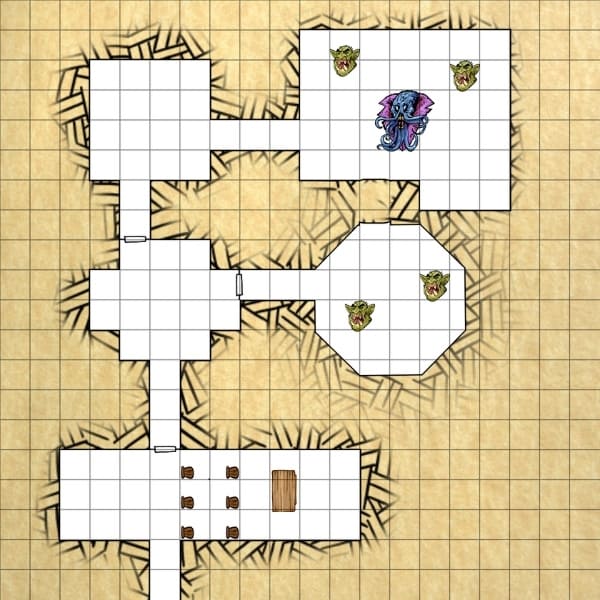
If you want to spice it up a bit there are color and shading options to give you something more than what you can do with a steady hand and graph paper. Or throw in some simple stamps and add some depth to your dungeon.
This is definitely the simplest option on the list, aside from donjon’s generator, but it is by no means dull. You’ll be able to make some great maps in just a few minutes.
That’s A Wrap!
This is by no means a definitive list of free map makers, in fact there are hundreds more out there, and I’ve used quite a few of them.
This list is just our opinion of what the best options are for you to start building your maps, right now.
We hope we’ve given you the tools you need to create new worlds. Now get out there and have some fun.
As a kid, I was often told to get my head out of the clouds and to stop living in a fantasy world. That never really jived with me, so I decided to make a living out of games, stories, and all sorts of fantastical works. Now, as an adult, I aspire to remind people that sometimes a little bit of fantasy is all you need when life gets to be too much.
